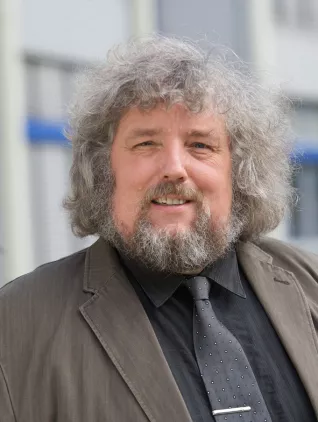Serious Games and Welfare Technology
Research project at a glance
Departments and Instituts
Funding type
Period
01.09.2016 to 31.08.2018
Website
Project Description
The project Serious Games and Welfare Technology addresses one of the great challenges in our time. The increasing number of elderly people and people in need of recovery after injuries, and how to give them a dignifying life.
Keeping seniors healthy through both preventative and rehabilitative means is of paramount interest to everyone. Having them living at home as long as possible will be of economic benefit to society and the individual, as well as increasing their quality of life.
Obectives of the project
The main goal of the project is to develop multidisciplinary courses and to educate people to use and develop new technical achievements within welfare technology. The students shall participate in ongoing development and research activities at the HHS, in close cooperation with the HEIs incubator companies or other companies/organizations that the HHS are cooperating with. Giving these start-up companies the possibility to get assistance from international students will be of great importance for these companies, making them more sustainable and increase and maintain international networks. This will be important for the creation of new jobs and new products within the EU.
The project is innovative because it helps students and employees to commercialize new ideas and results of ongoing research activities at the HEI institutions
Number and profile of participants
All the five project HEi partners have earlier collaborated within EU-Erasmus intensive programs and within Erasmus student and .teacher exchange activities. The HEl project partners have the following complementary experience and competences:
- HBRS: Safe system development and implementation.
- FHV: 3D Capturing and Modelling, User-experience related to Ambient Assisted Living (AAL) Serious Gaming Simulation.
- NTNU: Software system development, Real time human motion capturing and gait analysis, Clinical experience with serious games used at spinal cord injury units. Nursing, physical activity and depression in elderly.
- HvA: Serious Games design and development.
Description of activlties:
Development of MOOC modules for serious games related to welfare technology. Development of serious games related to welfare technology by International multidisciplinary student project teams supervised by international teams of professors from the partner HEls and partner companies. Project meetings and intensive programs for both professors and students. Methodology used by the carrying out of the project. Administrative and learning management system to be used is Blackboard. The development of the MOOC units using a proper educational framework. The development of the serious games based on teaching and learning theory. The scientific method used by the students in their development of the serious games will be literature studies, design science, experiments and testing.
A short description of the results and impact envisaged
Distant learning MOOC modules addressing development, use and application of serious games related promotion of health and general well-being, of senior citizens and people in need of rehabilitation.
International student projects (bachelor theses and undergraduate projects) supervised by HEIs and industry partners. The projects to be given a common grading by professors from HEIs and industrial project partners. Relevant knowledge and education for meeting the social challenges of an aging, and in need of rehabilitation, population. Enhanced and sustainable cooperation between HEI partners and partner companies.
The potential longer-term benefits
A joint semester on development of serious games and welfare technology. Increased mobility by students and professors. Help creating new jobs and companies by enhancing cooperation between HEIs, health care institutions and start-up companies. Development of serious games within welfare technology, thereby enhancing the quality and cost effectiveness of the treatment of the increasing number of elderly people and people in need of recovery after injuries.

